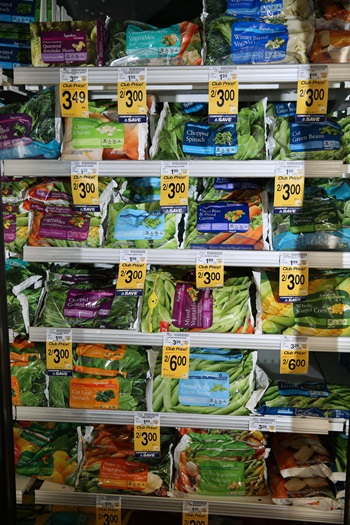By: Ashley Eisenbeiser, MS, CFS, Senior Director, Food and Product Safety Programs, FMI

More specifically, the press release states, “Consumers may not know that some frozen foods are not fully cooked or ready to eat, especially if they have browned breading, grill marks or other signs that normally show that a product has been cooked. In the recent USDA study, 22% of participants said a not-ready-to-eat frozen chicken entrée was either cooked, partially cooked, or they weren’t sure that the product was in fact raw.”
Along with the research report on frozen food, USDA also published findings from a survey on consumer food safety behaviors. The survey collected information on “various topics, including consumer use and satisfaction with the USDA Meat and Poultry Hotline, awareness of and response to food recalls, awareness of and understanding of foodborne illness outbreaks, and food safety behaviors related to grilling and serving food buffet style.”
These reports are part of a multi-year, mixed-method study that Food Safety and Inspection Service (FSIS) commissioned to evaluate various consumer food handling behaviors. These research reports, along with an index of FSIS’ consumer research reports related to food safety education programs and consumer behavior are available here.
The findings from these reports highlight the importance of consumer food safety education. The food industry has invested tremendous resources in food safety over the past decades and consumers expect safe food. According to FMI’s 2020 US Grocery Shopper Trends Report, nine out of 10 shoppers have confidence in the safety of the food at the grocery store. We also see that consumers believe that food safety is a collective responsibility and they too play an important role in keeping food safe.
Frozen foods are a convenient option for families preparing meals at home as they are often able to be prepared easily and relatively quickly. The Power of Frozen report highlights the growth of the frozen category over the past few years.
FMI supports the food industry in helping consumers safely prepare food at home through the support of the Partnership for Food Safety Education (PFSE). FMI is a founding member of PFSE and has been a partner of PFSE since its inception in 1997. FMI works with PFSE to bring food safety information to consumers by promoting the “Core Four Practices” of safe food handling– Clean, Separate, Cook and Chill–to a variety of audiences through a network of food safety educators and thought leaders.
Below are some resources from the Partnership for Food Safety Education to support your efforts to help consumers prepare and serve healthy, safe meals.
1. Core Four Practice Fact Sheets
Clean Fact Sheet | Separate Fact Sheet | Cook Fact Sheet | Chill Fact Sheet
2. Story of your Dinner
http://www.fightbac.org/food-safety-education/the-story-of-your-dinner/
3. Safe Recipe Style Guide
https://www.saferecipeguide.org/
4. Produce Pro
http://www.fightbac.org/food-safety-education/safe-produce/
5. Go 40 or Below
http://www.fightbac.org/food-safety-education/40-or-below/
7. Food Safety Consumer Research Project: Meal Preparation Experiment on Raw Stuffed Chicken Breasts Full Report | Executive Summary
8. Food Safety Consumer Research Project: Web-based Survey on Food Safety Behaviors and Consumer Education Full Report | Executive Summary
We will be participating in USDA’s public meeting on consumer food safety eduation on October 6.


 Industry Topics address your specific area of expertise with resources, reports, events and more.
Industry Topics address your specific area of expertise with resources, reports, events and more.
 Our Research covers consumer behavior and retail operation benchmarks so you can make informed business decisions.
Our Research covers consumer behavior and retail operation benchmarks so you can make informed business decisions.
 Events and Education including online and in-person help you advance your food retail career.
Events and Education including online and in-person help you advance your food retail career.
 Food Safety training, resources and guidance that help you create a company food safety culture.
Food Safety training, resources and guidance that help you create a company food safety culture.
 Government Affairs work — federal and state — on the latest food industry policy, regulatory and legislative issues.
Government Affairs work — federal and state — on the latest food industry policy, regulatory and legislative issues.
 Get Involved. From industry awards to newsletters and committees, these resources help you take advantage of your membership.
Get Involved. From industry awards to newsletters and committees, these resources help you take advantage of your membership.
 Best practices, guidance documents, infographics, signage and more for the food industry on the COVID-19 pandemic.
Best practices, guidance documents, infographics, signage and more for the food industry on the COVID-19 pandemic.
